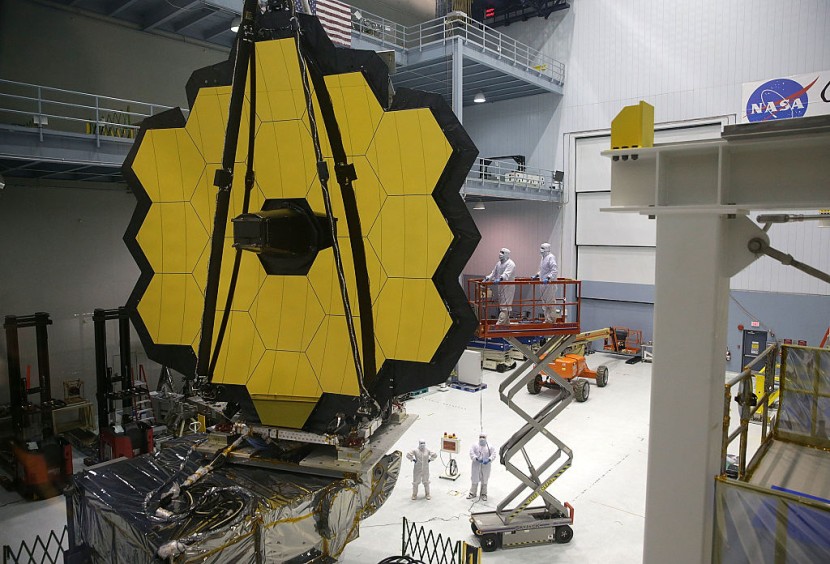
NASA's James Webb Space Telescope has discovered the first evidence of carbon dioxide in the atmosphere of an exoplanet located outside of our solar system.
The observation of a gas giant planet orbiting a Sun-like star 700 light-years away provides important insights into the composition and formation of the planet. The finding, which was accepted for publication in Nature, offers evidence that in the future, Webb may be able to detect and measure carbon dioxide in the thinner atmospheres of smaller rocky planets.
First Evidence of Carbon Dioxide in Exoplanet
The planet, called WASP-39 b, is a gas giant that has a mass roughly one-quarter that of Jupiter (which is roughly the same as Saturn) and diameter 1.3 times greater than Jupiter. The extreme puffiness is related in part to its high temperature, which is about 1,600 degrees Fahrenheit or 900 degrees Celsius.
Unlike the cooler, more compact gas giants in our solar system, WASP-39 b orbits very close to its host star, only about one-eight the distance between the Sun and Mercury. It is able to complete one circuit in just over four Earth days, as per NASA.
The discovery of the planet, which was reported in 2011, was made based on ground-based detections of the subtle, periodic dimming of light from its host star as the planet transits or passes in front of the star.
Read Also : Scientists Discover Undersea Crater Created by Previously-Unknown Asteroid During the Time of the Dinosaurs
Previous observations of the gas giant from other telescopes, including NASA's Hubble and Spitzer space telescopes, revealed the presence of water vapor, sodium, and potassium in WASP-39 b's atmosphere. But Webb's unmatched infrared sensitivity has now confirmed the presence of carbon dioxide on this planet as well.
According to CNN, an associate professor in Arizona State University's School of Earth and Space Exploration, Mike Line, said in a news release that carbon dioxide molecules are sensitive tracers of the story of planet formation. Line is a member of the JWST Transiting Exoplanet Community Early Release Science team, which was the one that conducted the investigation of WASP-39 b.
Potential of Life
The team made the observation using Webb's Near-Infrared Spectrograph, which is one of its four scientific instruments. The research is part of the Early Release Science Program, an initiative designed to provide data from the telescope to the exoplanet research community as soon as possible, guiding further scientific study and discovery.
Line added that by measuring the planet's carbon dioxide feature, experts will be able to determine how much solid versus how much gaseous material was used to form the gas giant. He said that in the coming decade, JWST will make the measurement for a variety of planets to provide insights into the details of how planets form and the uniqueness of our own solar system.
An associate professor in physics at Oxford University, Dr. Vivien Parmentier, who is a member of the collaboration behind the observation, said that the analysis could help in figuring out the chances of life elsewhere in the universe.
They said, "CO2 detection is typically one of the things we're going to be looking for. This shows we have the capability, which is extremely exciting for all of us," The Guardian reported.
Related Article:
NASA Scientists Test Gravity in Attempt to Investigate Dark Energy in the Universe
© 2026 HNGN, All rights reserved. Do not reproduce without permission.







